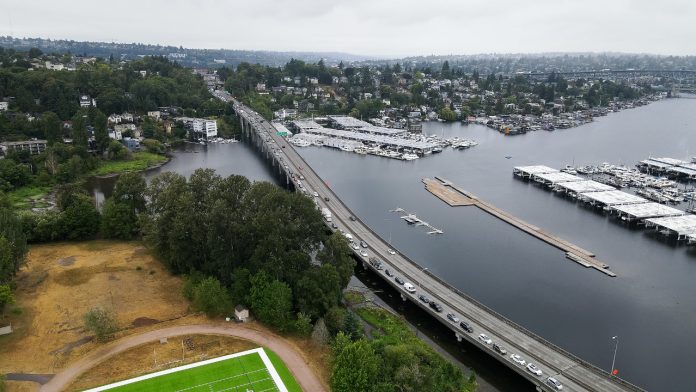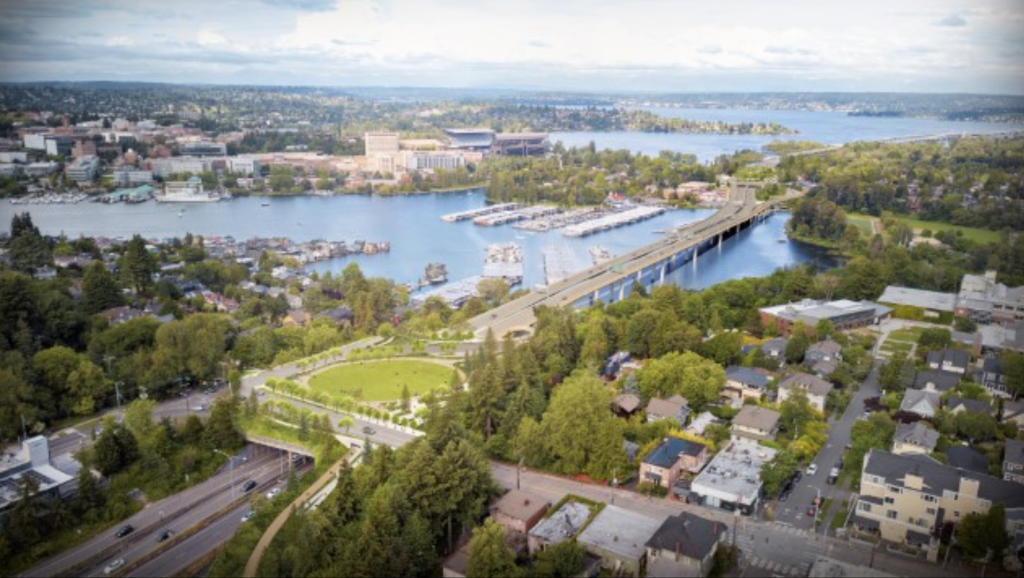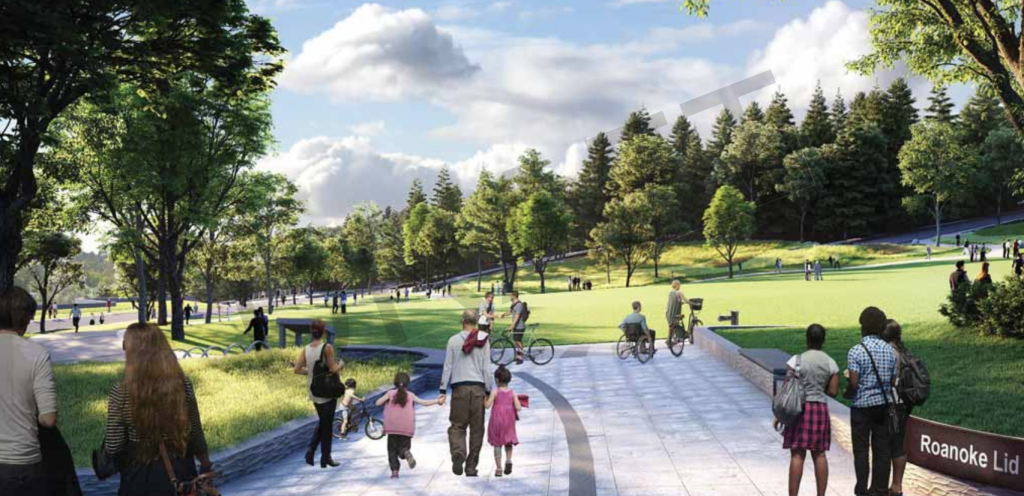
In the face of major cost escalations, the Washington House of Representatives proposes to put multimodal and highway mitigation improvements in North Capitol Hill on an indefinite hold as part of the last phase of the SR 520 bridge replacement project. The newly released supplemental transportation budget for 2023-2025, unveiled this week by house transportation committee chair Jake Fey (D-27, Tacoma), proposes only moving forward with replacing the northern segment of two bridge spans over Seattle’s Portage Bay, leaving the other one — and a planned highway lid at Roanoke Street — for a “future time.”
Replacing just the north bridge also means that an extension of 520’s multi-use trail between Montlake and Capitol Hill, planned as part of the new south bridge, would be delayed by years unless the project was dramatically redesigned. The south bridge, built on hollow columns like a myriad of other elevated highways around the region from the same era, would continue to be vulnerable to collapse in a major earthquake, too.

Bids to build the overall Portage Bay project, lid included, came in last fall at over $1.3 billion, around 70% more than the original cost estimates produced by the Washington State Department of Transportation (WSDOT). That prompted the department to head back to the legislature to try and get additional funding by the end of this year’s legislative session, which ends on March 7.
Rep. Fey, in a press conference this week, described the House’s approach to the transportation budget as “lifting all boats, in terms of the money that we have, as opposed to some of the boats.”
“It’s a big number, right, and it’ll throw everything out of balance if we fund the Portage Bay,” Fey said. “We do fund some of the cost increases to finish up the existing work, but it seemed to us that we could move forward with the north bridge without jeopardizing other projects.”

But splitting the project into different phases could end up costing the state more overall — unless elements like the highway lid and multi-use trail are eventually considered superfluous and jettisoned from the project altogether. In December, WSDOT told the transportation committees of both chambers that phasing the entire project could add at least seven years to the project’s full timeline, already set to be completed in the early 2030s, and add an additional $1 billion to $1.5 billion in overall costs.
The proposed House transportation budget represents a dramatically different vision on how to move forward than the counterpart budget in the Senate, which was also released this week. The Senate’s budget proposes moving forward with the current bid, allocating an additional $770 million for the entire 520 project and $52 million more during the current biennium.
“We believe that, you know, while it’s not ideal to have cost increases on the Portage Bay contract, that we will never get a cheaper price than with the one we have right now to do that work,” Senate transportation committee chair Marko Liias (D-21, Edmonds) said Tuesday. “And if we go the way of the House, it probably will cost us more than double in the long-term by delaying some of those key elements of the project until later.”

On the Senate side, there are additional ideas being put forward that could potentially generate additional transportation revenue on the SR 520 corridor in the long-term. The proposed transportation budget includes direction to WSDOT to coordinate with the Washington Transportation Commission, which oversees state tolling rates, to study potential segment tolling on 520. Senator Jamie Pedersen (D-43, Seattle), who represents the district that includes 520 in Seattle, has introduced a bill that would remove the restriction that the floating bridge portion of the highway is the only one tolled. The report on segment tolling would be due by next July.
In the next two weeks, the House and Senate will have to reconcile their budgets, with this fairly significant disagreement one of the biggest hurdles to reconcile. If the House’s position on Portage Bay prevails, it could set a precedent that walking and biking facilities and highway lids are not essential elements of state highway projects, or end up subjecting the area around North Capitol Hill to a construction period that’s twice as long and that ends up ultimately eating up even more valuable funding for transportation projects.
You can contact Rep. Fey’s office directly via this link.
Ryan Packer has been writing for The Urbanist since 2015, and currently reports full-time as Contributing Editor. Their beats are transportation, land use, public space, traffic safety, and obscure community meetings. Packer has also reported for other regional outlets including BikePortland, Seattle Met, and PubliCola. They live in the Capitol Hill neighborhood of Seattle.

